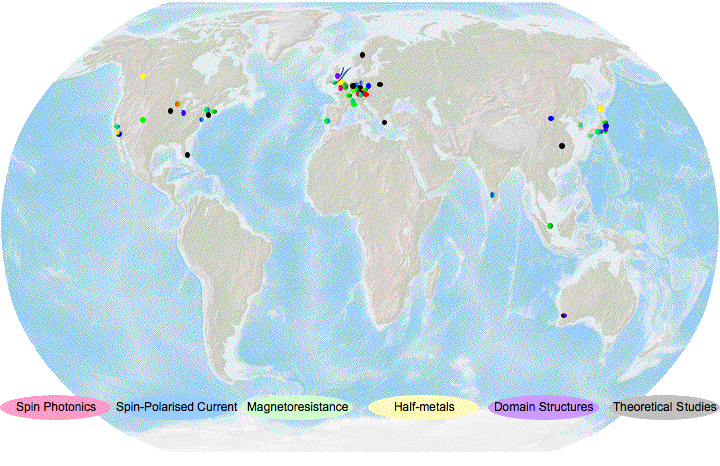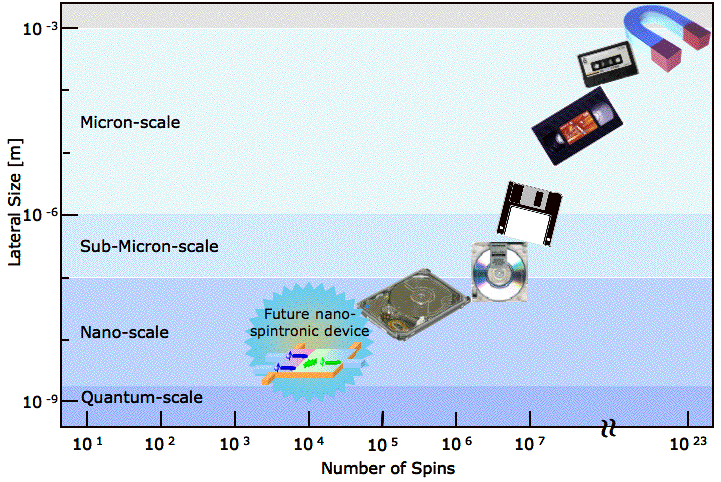Last updated: 27/12/2018
Spintronics Research in the World
 Spintronics is one of the most exciting and emerging fields in condensed-matter physics. Spin-polarised electrons can be introduced into a direct-bandgap semiconductor by circularly polarised light (
Spintronics is one of the most exciting and emerging fields in condensed-matter physics. Spin-polarised electrons can be introduced into a direct-bandgap semiconductor by circularly polarised light ( spin photonics), into a a non-magnetic metal due to the s-d interaction (
spin photonics), into a a non-magnetic metal due to the s-d interaction ( spin-polarised current) and into a ferromagnet by spin-transfer torque (
spin-polarised current) and into a ferromagnet by spin-transfer torque ( magnetoreistance), all of which are based on magnetoelectronics and nanoelectronics. In addition, new magnetic materials have been searched in order to realise both the half-metallicity (
magnetoreistance), all of which are based on magnetoelectronics and nanoelectronics. In addition, new magnetic materials have been searched in order to realise both the half-metallicity ( half-metals) and favarable domain structures (
half-metals) and favarable domain structures ( domain structures). These experimental studies have been supported by theoretical investigation (
domain structures). These experimental studies have been supported by theoretical investigation ( ).
).
Nano-Spintronics
 By combining the above nanoelectronics and materials science, nano-spintronic devices can be fabricated as a future spintronic device. Such a device may become a template to precisely characterise the fundamental physical properties of the spin current; spin diffusion length of the non-magnet and coherent size of the spin current, and propagation mechanism of the spin current, for instance. This research requires knowledge on both physics and materials science and provides great impact on the spintronic community.
By combining the above nanoelectronics and materials science, nano-spintronic devices can be fabricated as a future spintronic device. Such a device may become a template to precisely characterise the fundamental physical properties of the spin current; spin diffusion length of the non-magnet and coherent size of the spin current, and propagation mechanism of the spin current, for instance. This research requires knowledge on both physics and materials science and provides great impact on the spintronic community.
For further reading < Introduction to Spintronics Back to the Top